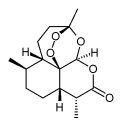Editor:
I have received many inquiries from physicians about the use of Artemisinin therapy since my article appeared in the Townsend Letter's December issue. The herb Artemisinin is not only the drug of choice for Malaria worldwide but is also turning out to be a highly successful oxidative therapy that works synergistically with other oxidative modalities to treat a number of difficult conditions. As President of The International Oxidative Medical Association, I would like to invite those interested in learning how to use Artemisinin and other oxidative therapies to attend one of our upcoming April teaching courses in Phoenix and to also attend our Annual Education Meeting. This year's meeting theme is Integrative Therapies in the Treatment of Cancer.
Our Basic Oxidative Medicine Course offering teaches the fundamentals of oxidative medicine -- both theory and practical lessons on the use of: photoluminescence, ultraviolet blood irradiation, hyperbaric oxygen, intravenous vitamin therapies, etc. and is for the physician who has had little or no experience in alternative therapies.
Our second course offering is a Basic Chelation Therapy Workshop for both technicians and physicians and will cover the newly emerging fast push calcium EDTA technique and oral chelation strategies for the treatment of mercury, lead, cadmium, arsenic, etc. as a treatment method for atherosclerosis, autism, Alzheimer's, Parkinson's, etc.
For those physicians who have already attended a Basic Oxidative Medicine course, we are offering an advanced workshop on a new method of treating cancer that uses low dose chemotherapy in combination with insulin (Insulin Potentiation Therapy Practical Workshop). This new method is also useful in the treatment of many other conditions and is a "must" attend for those who are looking for the most effective non-toxic, insurance-reimbursable cancer therapy to offer their patients. These courses fill up quickly so don't delay in signing up.
Immediately following the above mentioned workshops, IOMA in association with the Gordon Research Institute will feature that weekend a meeting on Integrative Therapies in the Treatment of Cancer. We will be exploring cancer treatment strategies with oxidative agents such as artemisinin, IPT, vitamin C, D, K, B-12, ozone, photoluminescence, ultraviolet blood irradiation, hydrogen peroxide, hyperbaric oxygen, etc, paying attention to peculiar "Achilles Heel" metabolic properties of cancer cells. Newly emerging strategies to enhance apoptosis based on p53 gene properties will be presented. At least three well known German physicians (including Dr. Frederich Douwes and John Ionescu) will be in attendance or assisting in the teaching as well as a stellar cast of talented alternative medicine specialists like Gary Gordon. The board of directors of IOMA will also be presenting their findings and methodologies. I will be updating Artemisinin usage and experience.
Unfortunately, available hotel space limits attendance at the spring meeting, April 2-6, so those interested should register early to avoid missing out on these great events. For those interested in attending call 928-472-4263 or visit Gordon Research on the net.
Robert Jay Rowen, MD, President
International Oxidation Medicine Association
Editor-in-Chief, Second Opinion
COPYRIGHT 2003 The Townsend Letter Group
COPYRIGHT 2003 Gale Group



